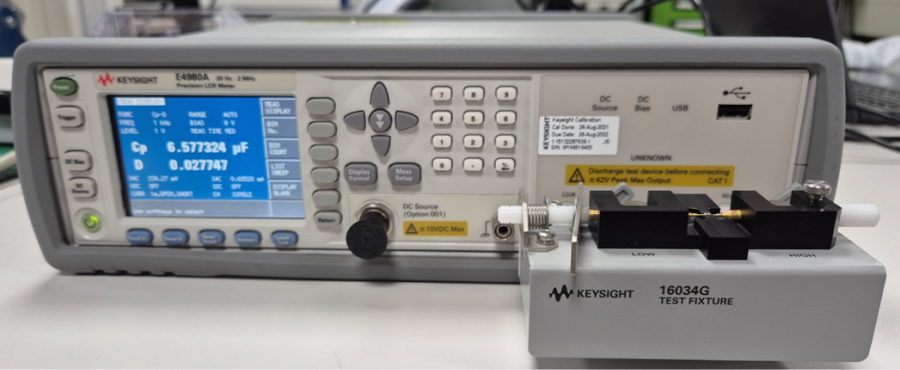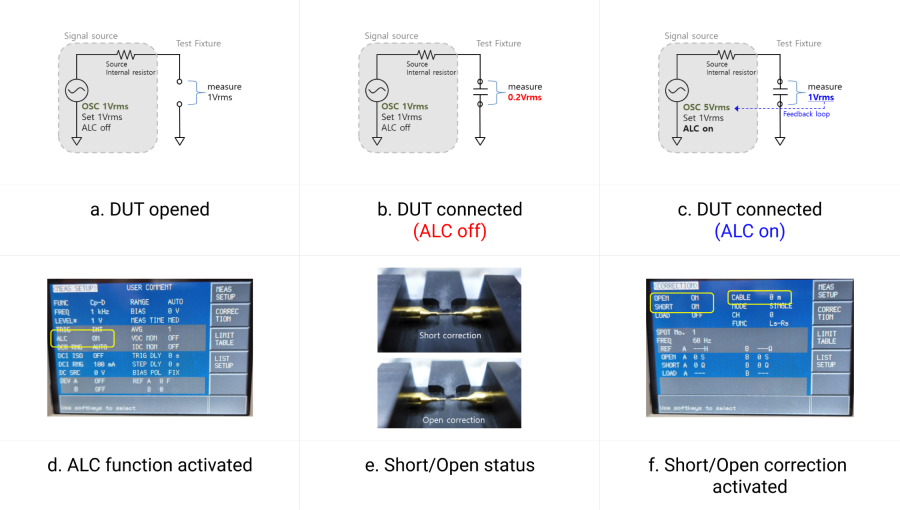MLCC (Class II) product has the characteristic that capacitance is decreased when DC voltage is applied, This could be measured using the typical LCR meter.
- Measurement equipment : LCR meter E4980A + Test Fixture 16034G/E (Keysight Technologies Corp.)

- Test conditions
1) Frequency : refer to SPEC sheet for each product (e.g., 1kHz, 120Hz)
2) AC voltage: refer to SPEC sheet for each product (e.g., 1Vrms, 0.5Vrms)
3) DC voltage : from 0Vdc to Rated voltage, keep time(60sec) by each point
4) ambient temperature : 25℃ ± 3 ℃
※ Caution
1) Measurement should be proceeded after ‘pre-treatment at 150℃ for 1hour and keep at room temperature for 24hour’
*refer to FAQ “MLCC Aging phenomenon”
2) Because the voltage source of LCR meter has internal resistor, the voltage between DUT terminals may differ from setting voltage. This equipment(E4980A) provides ALC(Auto level control) function to control DUT voltage. Therefore, capacitance should be measured while ALC function is activated. If ALC function is not activated, the capacitance value may be a little low. (Figure a, b, c, d)
3) Since parasitic of the test fixture can affect on capacitance value, Short status and Open status of fixture and cable length must be properly corrected. (figure e, f)
Please refer to the user guide of the equipment for detailed measurement setting methods.

[Reference]
- Impedance Measurement Handbook, Keysight Technologies Corp. 6th Edition, 2020